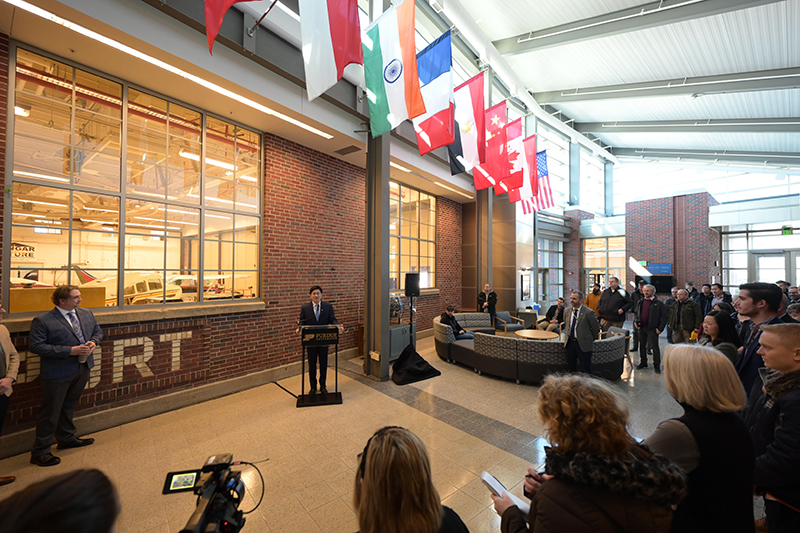


In collaboration with Ericsson and Saab, Purdue University Airport (Indiana’s second-busiest airport) has announced the creation of a unique 5G network that will serve as a “lab to life” proving ground to develop commercial solutions that can be replicated to improve operations and security at airports of all sizes.
The aim of the project is to illustrate in a live airport environment the benefits of private 5G for airports, with new high-performance networks being tested in real-life scenarios. It will showcase how state-of-the-art airport systems can work with 5G technology by combining airside and landside operations to improve efficiency and planning.
Adam Baxmeyer, Purdue Airport Manager described his facility as a “proven location in Indiana to aid commercial and industrial consumers.. having built a sterling reputation through more than 90 years of service.”
He also noted, “This collaboration is a natural fit for Purdue Airport as it enables us to study and better understand technologies that will be fundamental to airports of the future.”
In today’s environment, airports install sensors and systems that require hardwired network connections, often requiring physical connection points via trenches for copper lines or fibre-optic cables. Alternatively, airports can consider point-to-point radio frequency links, which are often unreliable, or public cellular connections that come with subscription fees and consumer-oriented performance limitations. The collaboration between Purdue University, Ericsson and Saab at Purdue Airport makes this approach obsolete.
In line with the agreement, Ericsson will contribute a private 5G network for the Purdue Research Foundation to operate at the Purdue University Airport – a public-use airport which conducts more than 125,000 aircraft operations annually. Meanwhile, Saab will install Aerobahn, a platform that unlocks airport efficiency for airlines and ramp management; installing SAFE Event Management platforms, a security platform used in airport operation centres; and deploying ADS-B sensors to track aircraft.
For its part, Purdue will provide the use of its airport as well as the lab to life testbed established throughout Discover Park District – a 400-acre, mixed-use development adjacent to the university’s campus.
“Purdue University is hte perfect location for this project to innovate airport management,” said Purdue President Mung Chiang. “Purdue has established longstanding partnerships with Ericsson and Saab, two Swedish innovators and global tech leaders. Purdue University Airport is one of the handful of airports operated at a research university in the US. And Purdue’s Discovery Park District, next to our airport, has provided a lab to life ecosystem where cutting-edge technologies are deployed before any other locations in the country.”
He was joined by George Mulhern, Head of Ericsson Enterprise Wireless Solutions, who said: “We are witnessing uptake in global demand for digitalisation at airports that requires stable, secure and high-performing wireless networking. Ericsson’s Private 5G network will enable cellular connectivity for the lab to life innovation platform at the Purdue University Airport.”
He continued, “This unique collaboration enables trials and industrialisation of 5G applications and use cases that help solve aviation market needs – improving flight safety, enhanced passenger experience, as well as increased efficiencies and cost savings.”





